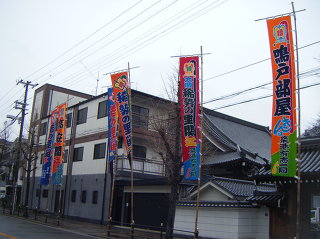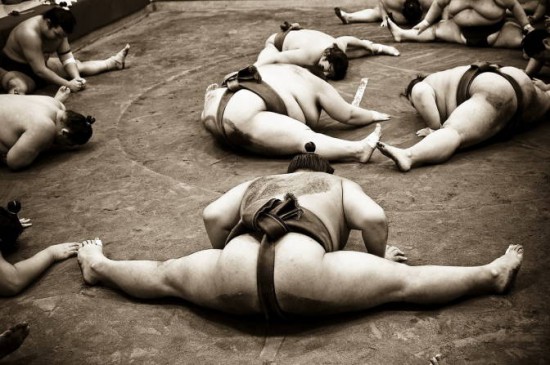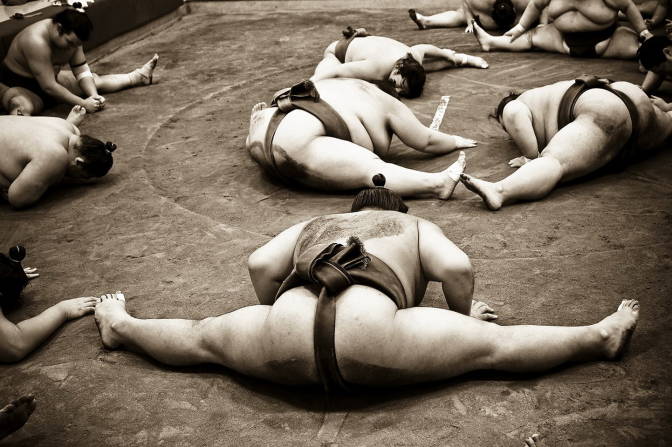Don’t miss the opportunity to experience Japan’s traditional culture up close when visiting Osaka. Watching sumo practice can become a once-in-a-lifetime memory for foreign visitors. Here, we introduce the morning sumo practice viewing in Osaka.
Sumo Practice Viewing in Sumo Stables
The morning sumo practice viewing in Osaka is a special opportunity when sumo stables are open to the public. In the fourth week of February, sumo stables move to Osaka in preparation for the March Osaka tournament, and Sumo wrestlers can be seen around the city. They usually wear Kimonos, tie their hair in topknots, and head to the stadium in the afternoon during the two weeks of the tournament. Spectators can watch their entrance and cheer them on.
Practice Period

From the first week of March until the start of the Osaka Tournament, wrestlers practice every morning in their respective stables. Some stables allow visitors to watch these practices. Even during the tournament period, some wrestlers do light exercises in the morning, but prior confirmation is recommended. Normally, the stables are open from 6:30 to 10 a.m. during the tournament period and from 7 to 11 a.m. for a week before the tournament. The temporary stables are usually set up in temples or shrines in Osaka.
Highlights of the Practice
The practice starts with basic footwork, followed by body slamming, throwing techniques, and various other skills. Watching the wrestlers perform each movement seriously can be deeply moving for viewers. The collision between wrestlers, in particular, allows you to feel the dynamism of sumo.
Preparation for Viewing
Advance Confirmation is recommended. Normally, morning practices are held from 6:30 to 10 a.m., but this can vary by stable. To visit a sumo stable for viewing, decide in advance which stable you want to visit, contact them directly, and confirm whether practice will be held on the desired date and time. This inquiry is not a reservation for viewing the practice, as viewing is on a first-come, first-served basis.
Manners During Practice

Sumo today is well commercialised, but it originally comes from the Shinto ritual. To help create a faux-pas-free journey, arm yourself with a few of these handy etiquette tips before you go and see sumo wrestler training:
- Check the practice schedule in advance and contact the stable you plan to visit.
- Act quietly during the visit to avoid disturbing the wrestlers and other spectators. Do not shout or make loud noises.
- Check the instructions displayed at the entrance.
- Remove your hat.
- Even if photography is allowed, turn off the flash and shutter sound.
- Do not speak to the wrestlers or other observers.
- Avoid visiting in groups.
Do not attempt to make a reservation to watch the morning practice.
Location of Sumo Stables
List of Sumo Stables Available for Viewing during Osaka Tournament
| Stable | Sakigawa Stable: Home to the Osaka-born ōzeki Gōeidō and the Hyōgo-born sekitori Myōgiryū, especially noted for Gōeidō’s support during the Osaka tournament. |
| Address | 24-12 Hinodecho, Neyagawa-shi, Osaka-fu |
| URL | N/A |
| Stable | Isenoumi Stable: Features the Osaka-born wrestler Ikioi, known for his skill in sumo jinku (sumo folk singing) and national popularity. |
| Address | Fukuizumi corporation Matsubara factory, 5-760 Miyake Nishi, Matsubara-shi, Osaka-fu |
| URL | https://x.com/isenoumibeya?s=20 |
| Stable | Kise Stable: Has six sekitori, with Osaka-born Ura attracting particular attention. |
| Address | 3-25-15 Esakacho, Suita-shi, Osaka-fu |
| URL | https://x.com/kisebeya_com?s=20 |
| Stable | Miyagino Stable: Known for housing the strongest yokozuna Hakuho, along with popular makuuchi wrestler Ishiura. |
| Address | 14-13 Ishigatsujicho Tennoji-ku, Osaka-shi, Osaka-fu |
| URL | https://miyaginobeya.tokyo/ |
Visiting a sumo stable for practice viewing offers a rare chance to experience sumo culture up close. If you wish to visit, please respect the rules and manners of each stable and honor the daily effort and practice of the wrestlers.
